Gurriny Yealamucka—good healing
Gurriny Yealamucka* (Good Healing) Health Services Aboriginal Corporation (Gurriny) has a holistic approach to improving the health, social and emotional wellbeing of the 3000 people that make up Yarrabah’s Aboriginal and Torres Strait Islander population.
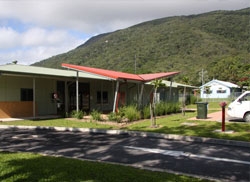
The Gurriny Yealamucka Aboriginal Health Services Clinic in Yarrabah
Part of this is its community healing, delivered through the men’s and women’s groups and youth programs, which has won accolades and is supported by researchers from James Cook University and the University of Queensland.
Over the past 30 years Gurriny has also worked hard to develop the governance skills of Yarrabah residents, an essential element as it leads the Sunshine State towards its new community-controlled health regime.
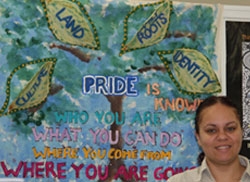
Thelma Phillips with a 'pride, land, roots' banner
‘The challenge along the way has been building the capacity of the community and organisations in playing a role in developing health and other services,’ Gurriny CEO, David Baird, says.
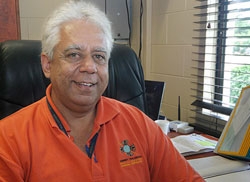
Gurriny CEO David Baird
‘The community of Yarrabah was really determined to get this organisation up and running and there’s been a number of people involved as far back as the 1980s and 1990s. Things were happening in the community concerning health, alcohol and suicide and this got people together for a meeting and that’s how it was formed.’
Set up as the Yarrabah Health Council nearly three decades ago, it finalised the transition to registered Aboriginal and Torres Strait Islander corporation in 2003 and followed a major feasibility study.
‘The feasibility study identified what we knew all along—services were fragmented and agencies operated in silos and were uncoordinated,’ David Baird explains. ‘A partnership was formed between the state and the Yarrabah community and a deed of commitment was signed in 2002 and revised in 2007.’
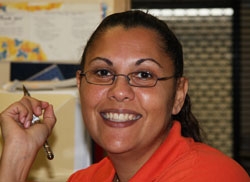
Eileen Yeatman
Today the challenge is the move towards a structure of community control, based on the Northern Territory model Pathways to community control and a study undertaken by the Queensland Aboriginal and Islander Health Council (QAIHC).
Other regions such as Cape York and Palm Island are also working towards the new system.
‘The transition to community control has really taken off over the last six to 12 months and we’re now ready to physically move into a new facility with Queensland Health and the ambulance service.
‘A policy framework is now being developed to aid our transition to community control as Yarrabah has been struggling to get through the bureaucratic maze of Queensland Health.
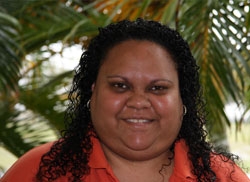
Natasha Munn
‘Obviously, we want mainstream to understand what the health needs of Aboriginal and Torres Strait Islander people are in Yarrabah and can only do that with the community playing a bigger role.
‘We need to look at how we prepare for change, issues of how we embrace real change and what we need to do from the top level all the way to management and staff. We need the capacity to do that.
‘It’s always been a struggle with government departments and funding and we need to become more astute business-wise and look to become self-sustainable. It’s a big challenge for government to look at change management too.
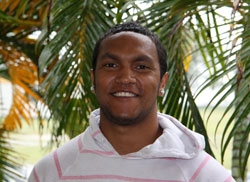
Theeran Pearson
‘There are always challenges and learning and obviously politics, which in some parts seem to derail the process, but we’ve come a long way in Yarrabah and we’ve got good staff and senior management.
‘We still have a way to go with learning, but I’m sure we can get there.’
*Gurriny Yealamucka means ‘good healing waters’ in the Kunghanghi language and refers to a nearby natural pool.